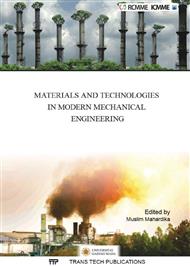p.423
p.430
p.435
p.445
p.453
p.457
p.461
p.467
p.473
Analysis of Success Factors for E-Waste Collection in Indonesia
Abstract:
There is no doubt that currently the use of electronic products and appliances has escalated tremendously in all over the world including Indonesia. This situation obviously also causes the increase of e-waste (electronic waste). Without proper treatment, e-waste will eventually cause environmental degradation as most of substances in electronic products contain hazardous materials. Proper treatment of e-waste will prevent environmental problems and at the same time will preserve natural resources as most of the materials even components in electronic products are reusable or recyclable. In many developed countries the collection of e-waste has been regulated and professionally managed. The situation is different in Indonesia as there is low law enforcement to handle e-waste at national and local levels. This paper will present a research utilizing Fuzzy Analytical Hierarchy Process (AHP) to determine the best e-waste collection scenario for Indonesia. Criteria and sub-criteria that need to be considered for future implementation as well as recommendation for e-waste collection in Indonesia are presented as the result of the research.
Info:
Periodical:
Pages:
467-472
Citation:
Online since:
June 2016
Authors:
Keywords:
Price:
Сopyright:
© 2016 Trans Tech Publications Ltd. All Rights Reserved
Share:
Citation:


